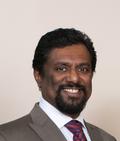Cited By
View all- Verma GRaskar SEmani MChapman B(2024)Cross-Feature Transfer Learning for Efficient Tensor Program GenerationApplied Sciences10.3390/app1402051314:2(513)Online publication date: 6-Jan-2024
- Huang Sliu fLi TWang ZYang NLi HJiang L(2024)STCO: Enhancing Training Efficiency via Structured Sparse Tensor Compilation OptimizationACM Transactions on Design Automation of Electronic Systems10.1145/370103330:1(1-22)Online publication date: 21-Oct-2024
- Root AYan BLiu PGyurgyik CBik AKjolstad F(2024)Compilation of Shape Operators on Sparse ArraysProceedings of the ACM on Programming Languages10.1145/36897528:OOPSLA2(1162-1188)Online publication date: 8-Oct-2024
- Show More Cited By



